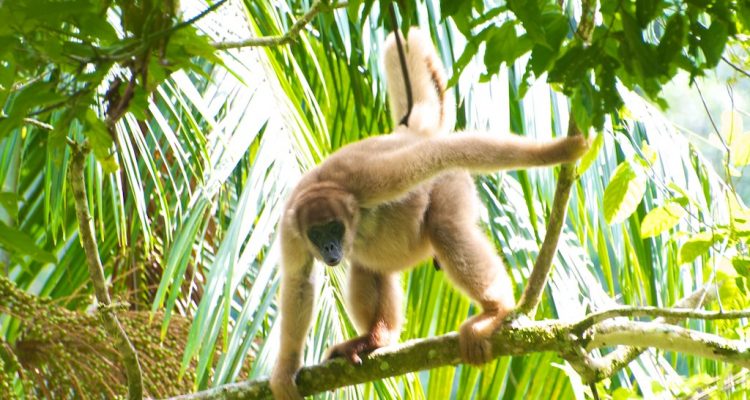
Brachyteles arachnoides
Brachyteles arachnoides NatureServe Explorer Species Reports — NatureServe Explorer is a source for authoritative conservation information on more than 50,000 plants, animals and ecological communtities of the U.S and Canada. NatureServe Explorer provides in-depth information on rare and endangered species, but includes common plants and animals too. NatureServe Explorer is a product of NatureServe in collaboration with the Natural Heritage Network.
ITIS Reports — ITIS (the Integrated Taxonomic Information System) is a source for authoritative taxonomic information on plants, animals, fungi, and microbes of North America and the world.
FWS Digital Media Library — The U.S. Fish and Wildlife Service’s National Digital Library is a searchable collection of selected images, historical artifacts, audio clips, publications, and video.
The southern muriqui (Brachyteles arachnoides) is a muriqui (woolly spider monkey) species endemic to Brazil. It is found in the Brazilian states of Paraná, São Paulo, Rio de Janeiro, Espírito Santo and Minas Gerais. This New World monkey is known locally as mono carvoeiro, which translates to “charcoal monkey”.
Muriquis are the largest New World monkeys and largest non-human native primates in the Americas. Male muriquis have a head-body length of 55–78 cm (21.5–30.5 in), with a tail of 74–80 cm (29–31.5 in) and a body weight of 9.6–15 kg (21–33 lb). Females have a head-body length of 46–63 cm (18–25 in), a tail length of 65–74 cm (25.5–29 in) and a body weight of 8–11 kg (18–24 lb).The tails are fully prehensile.
The southern muriqui, B. arachnoides, has a solid black face, distinguishing it from the northern species, B. hypoxanthus, which has a black face mottled with pink.
Southern muriqui are frugivores, which means that fruit is the preferred food type. They have been claimed to possess the most diverse fruit diet in the Atlantic, and also consume leaves and flowers.
This species is considered endangered because of habitat destruction, hunting pressures, and historic population declines. Only two captive populations of the southern muriqui exist. They are housed at the zoos of Curitiba and Sorocaba. The latter is located 80 km from the only long-term investigation of the southern muriqui in continuous forest, the Carlos Botelho State Park. The wild population was estimated at 1,300 in 2005
| Status | Date Listed | Lead Region | Where Listed |
|---|---|---|---|
| Endangered | 06/02/1970 | Foreign (Headquarters) | Wherever found |
- Countries in which the the Woolly Spider monkey, Wherever found is known to occur: Brazil
| 06/02/1970 | 35 FR 8491 8498 | Part 17 - Conservation of Endangered Species and Other Fish or Wildlife (First List of Endangered Foreign Fish and Wildlife as Appendix A) |
| 04/14/1970 | 35 FR 6069 | Notice of Proposed Rulemaking (Endangered Species Conservation); 35 FR 6069 |












